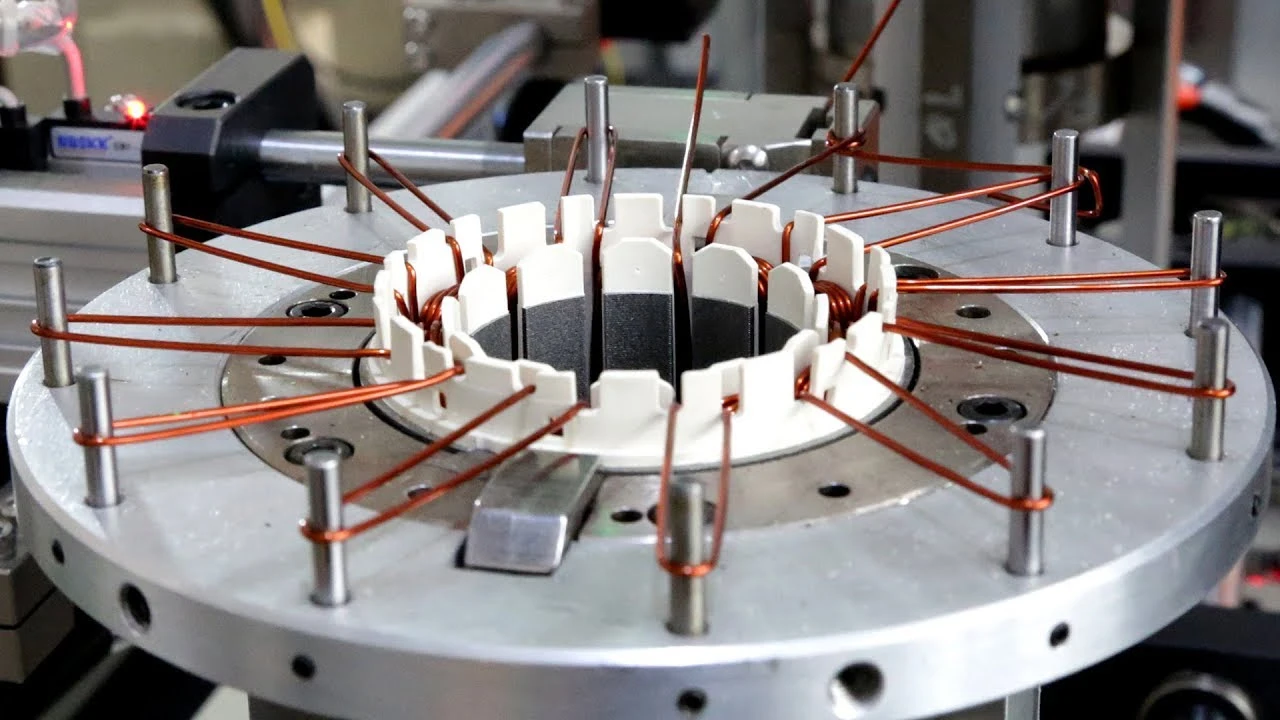Stator Winding Process A Comprehensive Guide
One of the most important concepts in electrical engineering is stator winding, which describes the painstaking process of creating coils inside the stator, which is an essential part of electric motors. Electromechanical systems rely heavily on these complex windings to transform electrical energy into mechanical power.
Anyone exploring the complexities of electric motor operation must have a thorough understanding of the relevance of stator winding. A crucial stage in guaranteeing the best possible performance from electric motors is the meticulous arrangement of conducting coils, which is essentially what the stator winding process entails.
This tutorial takes readers on an exploration of the basic elements of stator winding, clarifying its meaning, highlighting its significance in supplying electricity to motors, and offering a succinct synopsis of the complex process.
What Is Stator Winding?
The foundation of an electric motor's design is its stator winding, which is the careful placement of conductive coils inside the stator—a vital part. The finely coiled coils are essential to the electromechanical performance of a system since they are crucial in transforming electrical energy into mechanical power.
Stator winding is the process of carefully forming coils around the stator to improve the performance and efficiency of the motor. It acts as the pivot point for the electromagnetic fields of the motor, promoting rotor rotation and producing mechanical motion as a result.
Stator winding is an essential component of electrical engineering and motor-driven applications since, at its core, it is the skill of using electricity to power machines.
Types Of Stator Winding Methods
Based on how they are wound, stator winding techniques used in electric motors can be divided into several groups. The two most popular forms of winding techniques are lap and concentric winding.
Winding a lap:
In lap winding, adjacent coil sides are connected in parallel to create closed loops. Because of its redundancy, it offers robustness and ease of repair for high-current, low-voltage applications. Machines that run on direct current (DC) frequently use lap winding.
Winding in Concentric Circles:
Coils are arranged in layers with each layer covering the one before it thanks to concentric winding. In addition to saving copper, it is effective in high-voltage, low-current applications. This technique, which provides a balanced distribution of electromagnetic forces, is widely used in alternating current (AC) equipment.
Electric Motor Stator Winding Process Steps
A. Stage of Preparation
Material Inspection: To ensure that the stator winding materials satisfy quality standards, start by carefully inspecting them for flaws or anomalies. To ensure the best possible performance and longevity, confirm the integrity of the insulation materials and copper wire.
Coil Design and Planning: Carefully plan and design the coil while taking the stator's parameters into account. Create a thorough strategy that takes into consideration the winding patterns, wire diameters, and insulation layers, all while adhering to the efficiency and dependability specifications of the motor.
B. The Winding Stage
Techniques for Inserting Coils: To guarantee even winding distribution, use accurate techniques for inserting coils. To accurately place coils into the stator slots and avoid overlaps or gaps that could impair the motor's efficiency, use specialist tools and equipment.
Winding Techniques: Apply the proper winding techniques in accordance with the specifications and design of the motor. To achieve the best stator performance, this entails choosing between lap and concentric winding approaches while taking torque, voltage, and current needs into account.
C. Stage of Connection
Series and Parallel Connections: Depending on the electrical specifications of the motor, establish series and parallel connections. Make sure the coils are arranged correctly to attain the required voltage and current characteristics while following the design specifications for dependable and effective performance.
Insulation Procedure: To prevent electrical malfunctions, carefully apply insulation materials. To extend the life and dependability of the stator, use insulating tapes, varnishes, or coatings to shield the winding from external influences and possible short circuits.
D. Verification And Quality Control
The Value of Testing Stress how important testing is to confirming the integrity of the stator winding. Perform thorough tests, such as continuity checks, high-potential checks, and insulation resistance tests, to find any flaws or abnormalities that can affect the motor's operation and safety.
Conduct thorough quality checks at every level to make sure that the requirements are being followed. Examine the winding's size, resistance to windings, and integrity of the insulation. Use strict quality control procedures to ensure that the winding performs up to or better than industry requirements.
To sum up, the stator winding process is an essential aspect of electric motors that requires careful attention to detail at every turn. Precision is essential for testing as well as material inspection. Automation guarantees consistency in quality as well as efficiency as it continues to change the environment. Future developments in automation technologies should lead to even greater winding optimization. Accepting these tendencies guarantees that electric motor technology will continue to advance, promoting performance, dependability, and efficiency in a range of applications.


0 Comments